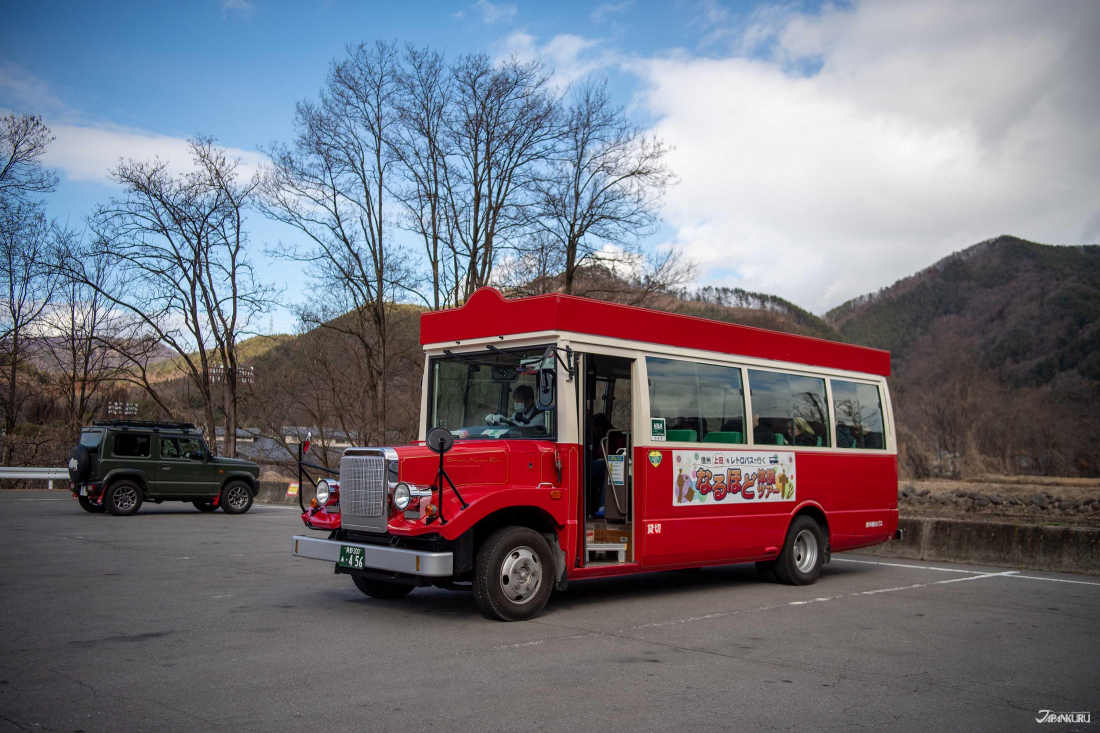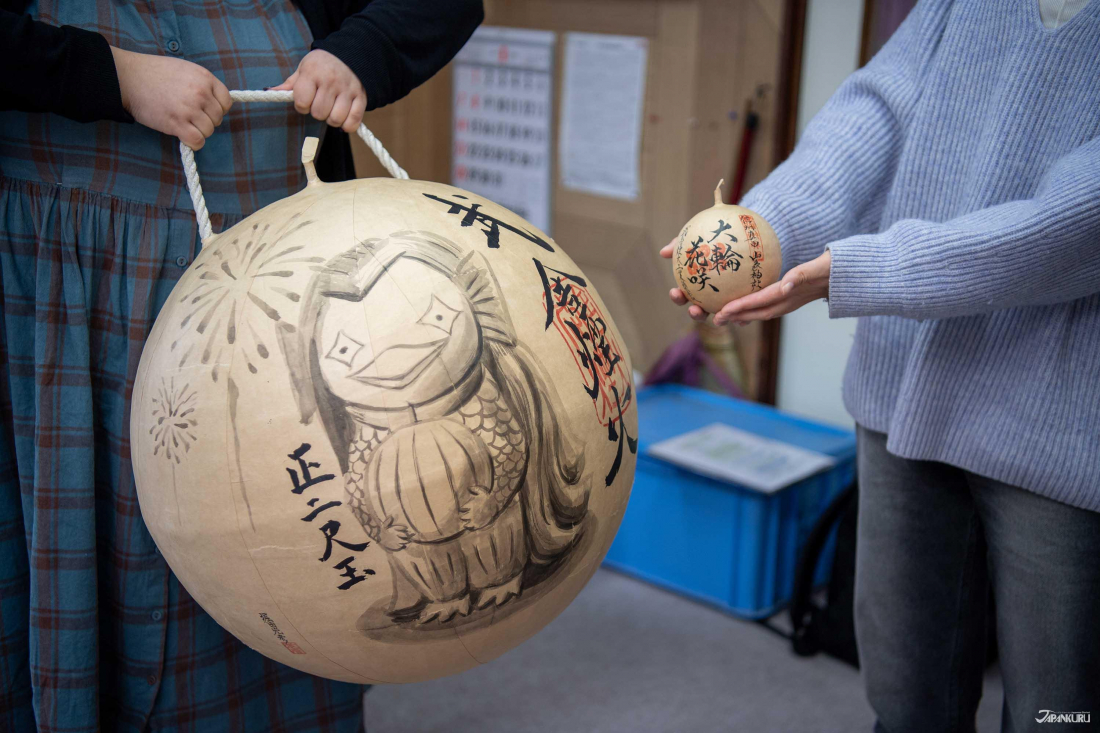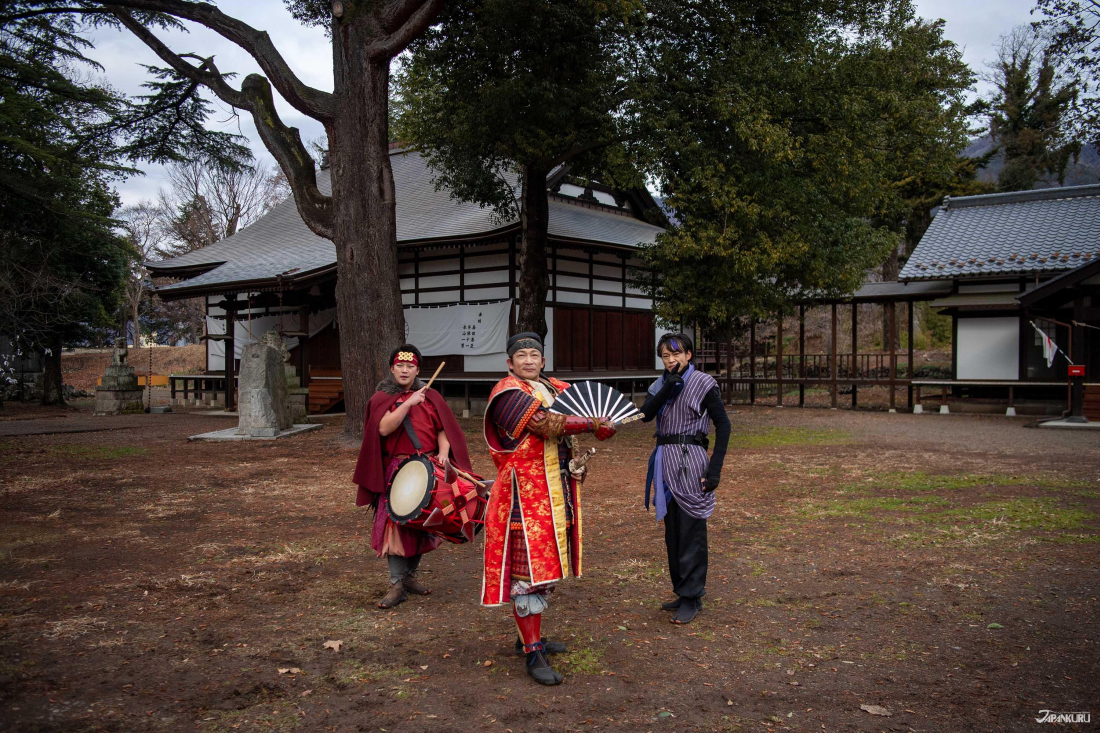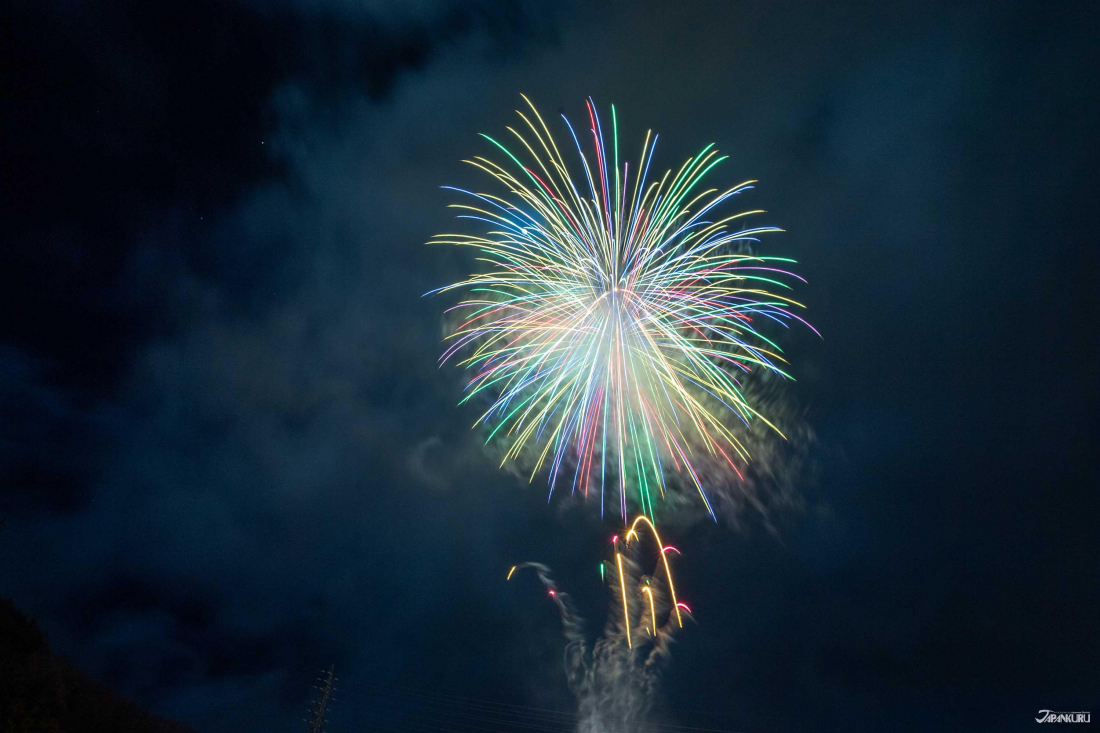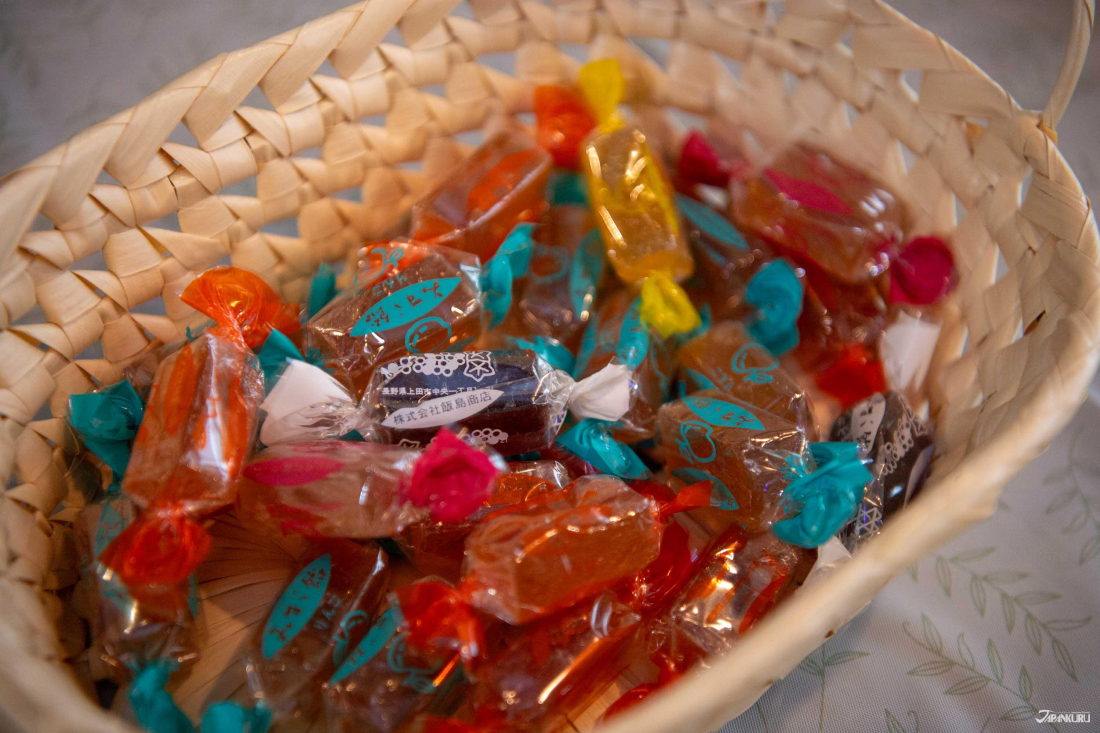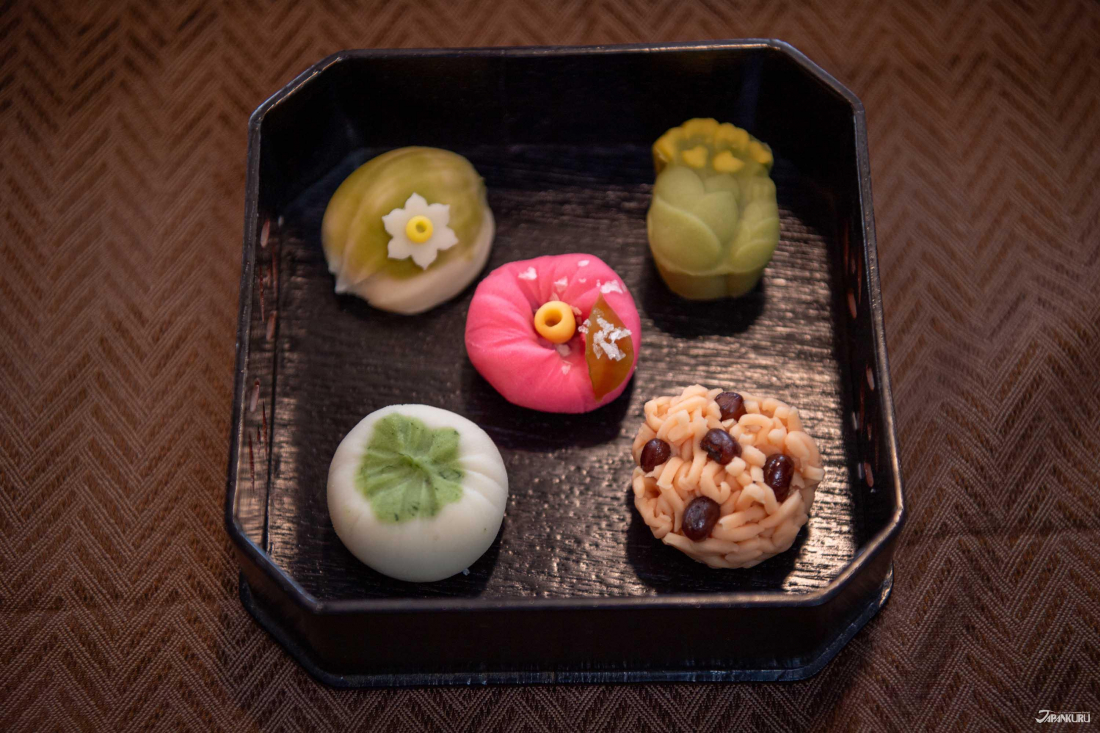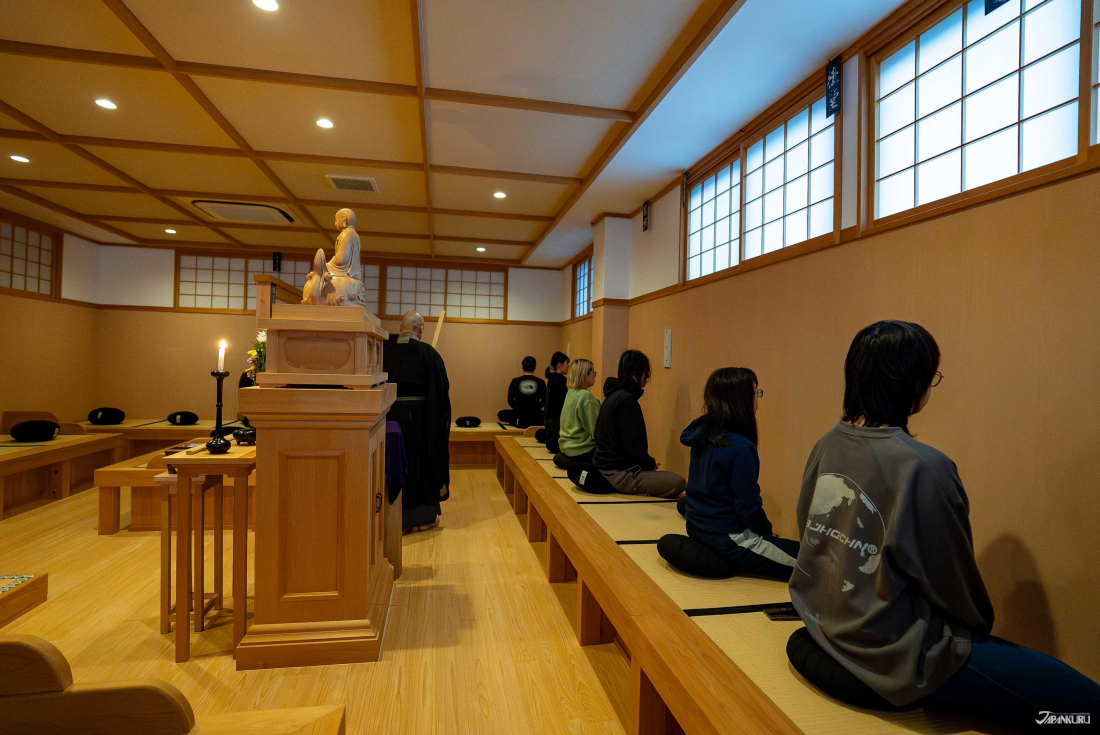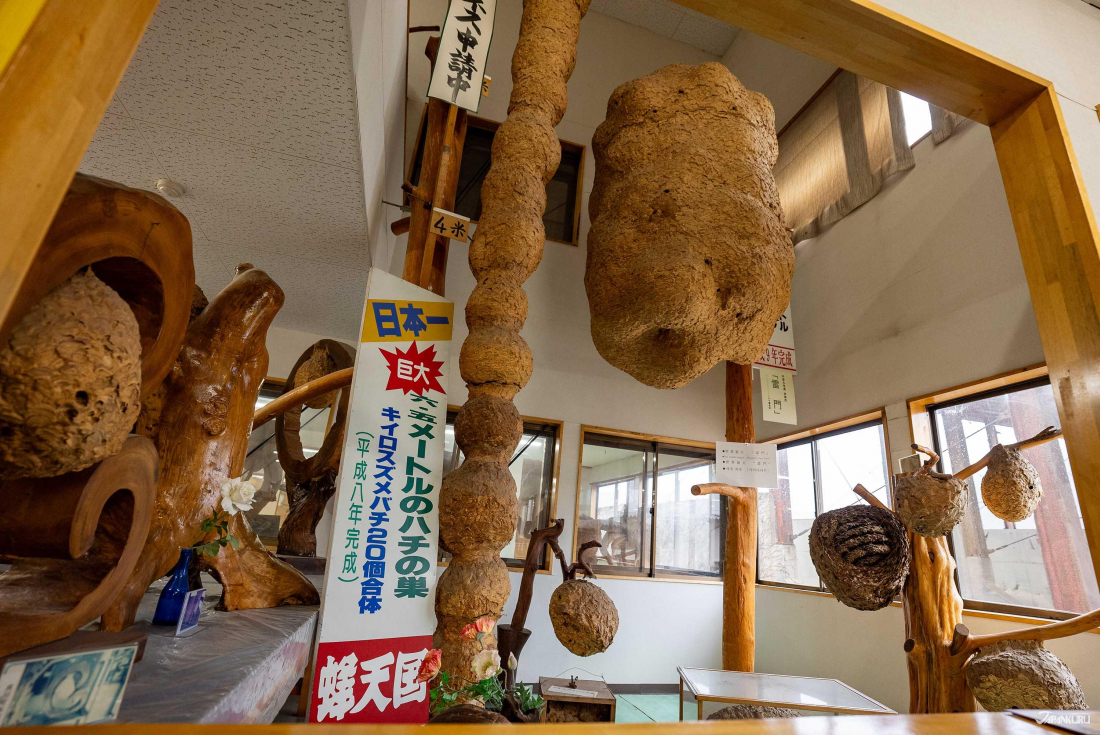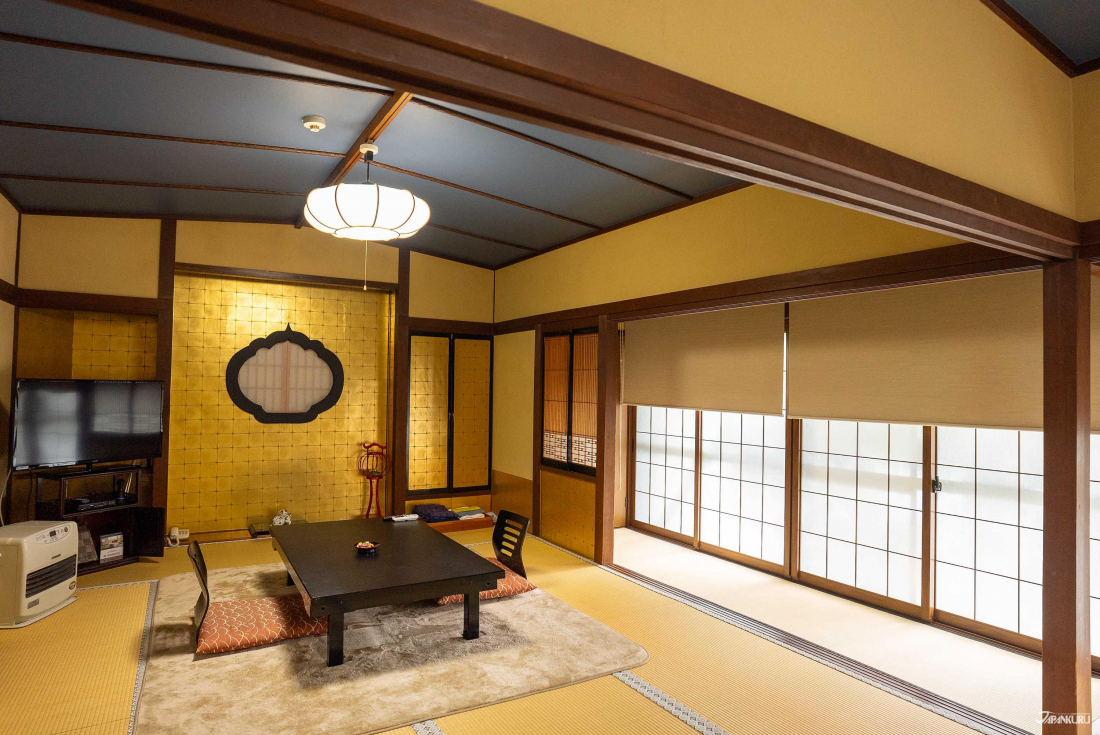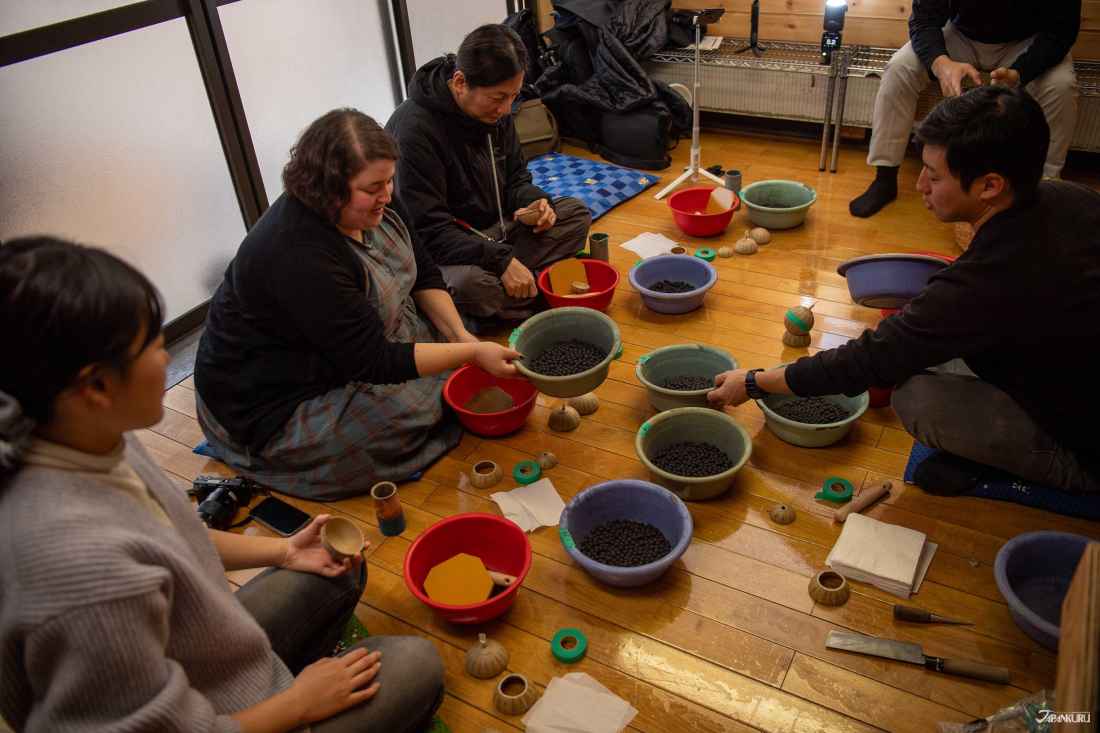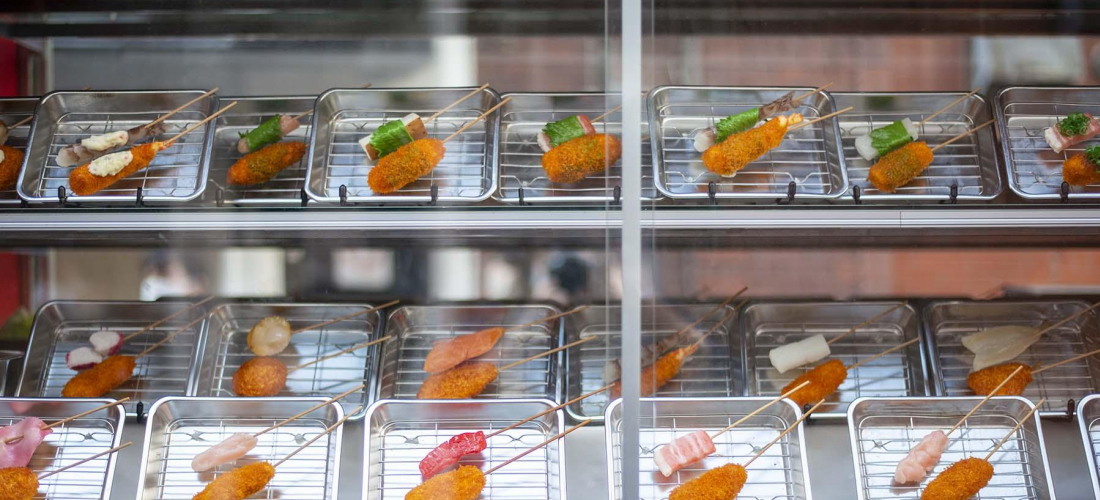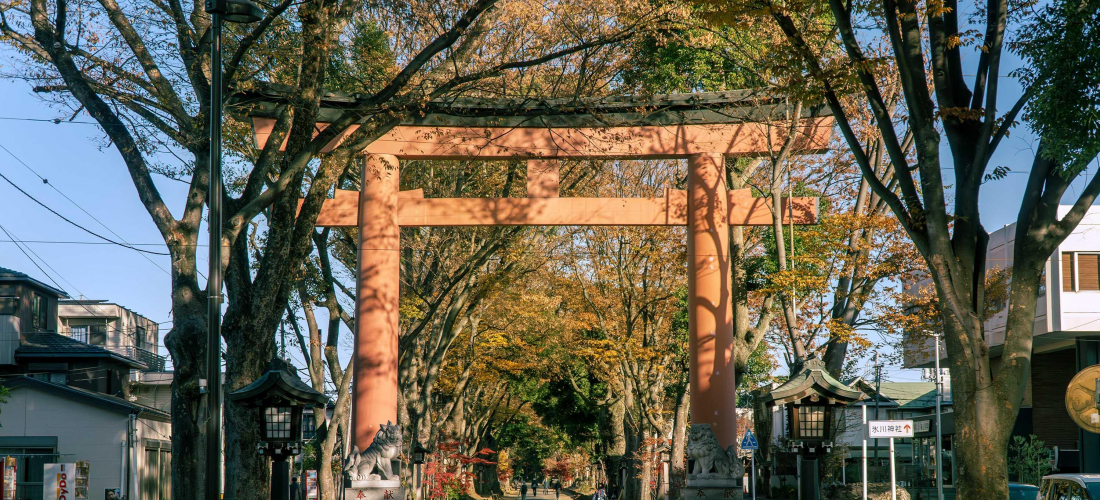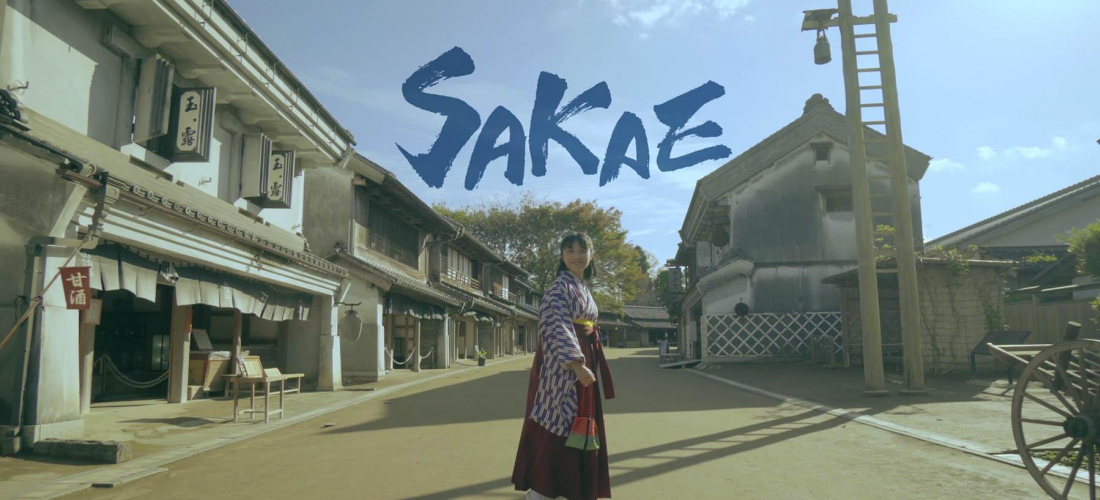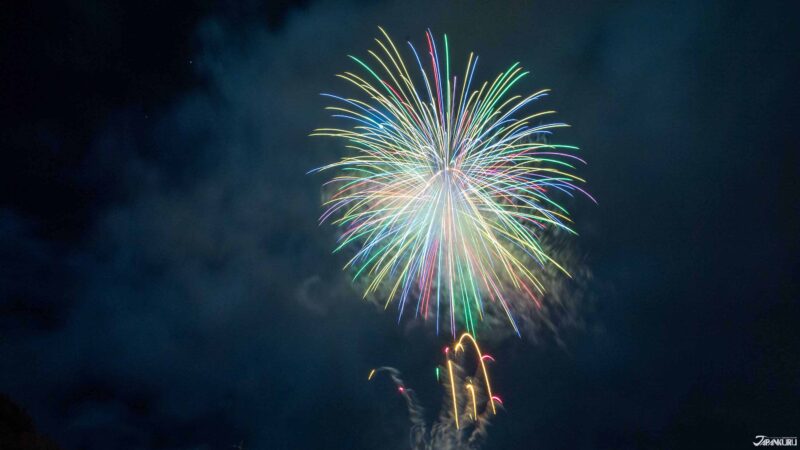
CONTENTS
Try this unique Japanese day tour to create fireworks with your own two hands and enjoy your own custom fireworks display, like a private Japanese festival! Ueda, Nagano is a day trip less than two hours from Tokyo by shinkansen, and you won’t find a fireworks making workshop like this anwhere else!
Ueda, Nagano: A Tokyo Area Destination We’d Almost Like to Keep a Secret
For those with niche interests, the city of Ueda might spark a memory thanks to its involvement in the 1998 Nagano Winter Olympics, or its use as the setting of the popular anime film Summer Wars. But this little city in Nagano is more than just a backdrop! Ueda has many of the things you look for when traveling in Japan, including a history packed with real samurai and ninjas, hot springs in use for over 1,400 years, mountains covered in white snow ripe for skiing, and starry night skies. It also has one big advantage as a destination for short-term sightseers: it's close enough to make a good day trip destination from Tokyo. (Ueda is only an hour and a half from Tokyo by shinkansen.) With so much off-the-beaten-path charm, it's tempting not to share this hidden destination with the world, but we think it will fit perfectly into the itinerary of any traveler looking to get away from Tokyo for a day and see another side of Japan.
Within Japan, on the other hand, Ueda is known for its summertime fireworks. The Shinshu Ueda Fireworks Festival is put together every year by three Japanese fireworks companies, and the breathtaking display is launched over a local river, with viewing areas so close to the action that each firework hits with an outsized impact. And in this city famous for fireworks, a local firework manufacturer is now offering travelers a one-of-a-kind opportunity to try firework manufacturing for themselves, in the form of a unique day trip tour with a fireworks making workshop. Join us as we try this once-in-a-lifetime fireworks day trip tour for ourselves, to try our hands at explosives and get hands-on with custom fireworks, and enjoy a little local Ueda flavor while we're there!
JR Ueda Station (JR上田駅)
1-1-1 Tenjin, Ueda, Nagano
Access: 1½ hours from Tokyo Station via the Hokuriku Shinkansen (approx. 6,260 yen)
Ueda Fireworks Workshop Day Trip Tour
At its heart, this tour is all about the fireworks, but the itinerary offers a full day of fun around Ueda, dipping into local history and Nagano cuisine!
9:15 Gather at Ueda Station / 9:30 Bus Departs
The easiest way to get to Ueda is to take the shinkansen, which goes straight from Tokyo Station to Ueda Station in about an hour and a half. This particular route isn't usually all that crowded, so you're usually safe buying a ticket from the machine in the morning and sitting in one of the non-reserved cars, but if you prefer to reserve your shinkansen seat you can also purchase your tickets online in advance.
10:00 ~ 12:00 Fireworks Making Workshop
The morning starts with the highlight of this Ueda itinerary, because the fireworks you make during the tour need to go through a series of finishing processes (drying, etc.) between the workshop time and the final launch. So first thing in the morning, each participant gets hands-on right away, starting by choosing a color and carefully placing each little firework "star" inside a round shell. These pyrotechnic stars are the little parts that create vibrant colors in the sky, and you can choose your favorite (or mix a couple) from a selection including pink, red, green, yellow, and special sparkly varieties that crackle before they fizzle out. The multi-step process includes lining the shell with stars, stuffing the center with black powder, tapping everything perfectly into place, and finally taping it up to create a finished firework. It's one thing to go see fireworks at a festival or a theme park, but it's totally different to make them yourself – it's not an opportunity you're likely to find anywhere else!
The fireworks you make during the workshop look pretty big in the sky, but the size of the finished product pre-launch is only about as big as a fist. Fireworks, it turns out, can vary a lot in size! Before you leave the fireworks factory, make sure you check out the sample fireworks shells they keep on hand, to see how big the fireworks they use in the Shinshu Ueda Fireworks Festival actually get. It's a little like a fireworks museum!
Afternoon
12:45 ~ 14:00 Soba Noodle Cooking Lesson
Time really flies when you're elbow-deep in fireworks and your hands are turning black from the stars, but before you know it it's time to scrub those fingers clean and move on to lunch at the Yukimura Yume Workshop. This unique space has a shop selling locally produced foods and souvenirs, free electric bike rentals for sightseers, and above all else, cooking lessons where you can make your own soba noodles from scratch and enjoy them for lunch! Soba noodles are made from buckwheat flour, and all the buckwheat used for these cooking lessons is grown locally in Ueda, where the buckwheat is said to be especially delicious thanks to the local climate, with large temperature differences during the day and night. As you might suspect, the Ueda area has plenty of restaurants offering soba, but nothing tastes as good as a batch of noodles made entirely from scratch and boiled within minutes – especially when you yourself measure out the buckwheat flower, mix and knead the dough, and slice each noodle into shape. Enjoy them with a simple dipping sauce to really savor the flavor! (On your way out of the Yukimura Yume Workshop, you can check out the souvenirs as well.)
Yukimura Yume Workshop (ゆきむら夢工房)
6090-1 Sanadamachiosa, Ueda, Nagano
Hours: 8:30 – 17:15 (closed over the New Year's holidays)
14:30 ~ 17:00 Explore the Ueda Castle Ruins, Anrakuji Temple, & the Bessho Onsen Neighborhood
There's nothing better than a leisurely walk after lunch, and this walking tour takes you on a route through some of Ueda's most historic areas. Back in the Sengoku period (1467-1568) Ueda was the domain of Sanada Yukimura, a widely beloved samurai whose fame has earned him titles such as "The Last Sengoku Hero," or even "The Number One Warrior in Japan." And even now, hundreds of years after Yukimura's death in the Battle of Tennoji, the samurai can still be found all over the city, painted on walls, standing tall in bronze statues, smiling cutely as an illustrated character, and scattered throughout every local souvenir shop. Among the ruins of Ueda Castle, once inhabited by Yukimura and his Sanada clan family, you might even be able to meet the great samurai and his retainers themselves, as if they'd walked straight out of history.
Afterwards, explore the quaint Bessho Onsen area surrounding Nagano's most historic hot spring (people have been soaking in the waters for 1,400 years), and visit Anrakuji to see hints of Heian-era (794-1185) Buddhist culture. This ancient temple has an iconic Dainichi Nyorai statue, and a grand octagonal pagoda that's the only one of its kind in Japan.
Ueda Castle Ruins (上田城跡)
2 Ninomaru, Ueda, Nagano
Bessho Onsen Area (別所温泉)
Besshoonsen, Ueda, Nagano
Anrakuji Temple (安楽寺)
2361 Besshoonsen, Ueda, Nagano
Evening
18:00 ~ 18:30 Enjoy the Handmade Fireworks Viewing Party
As the sun begins to set and the day comes to a close, it's finally time for the tour's grand finale, with the launch of the fireworks made during the morning's workshop. This isn't your average firework display, because you not only get to enjoy the beauty of each colorful explosion (and revel in the luxury of a private fireworks launch), but you also get to feel the pride that comes with seeing each beautiful firework made with your own two hands, or the hands of your fellow tour-mates. Participants are given the opportunity to shout their own wishes before their firework is launched, and the fireworks decorate the sky with the grandeur of the hopes and dreams of everyone involved. When the group's handmade fireworks have all been launched, the event ends with an added finale, put together using a selection of fireworks expertly made locally by Japan's leading pyrotechnic craftsmen!
Ueda Fireworks Workshop Day Trip Tour (上田市花火づくり体験ツアー)
Gathering Place/Time: JR Ueda Station Onsen Exit / 9:15 (~9:30 departure)
Time: Approx. 9½ hours in total (9:15 to 18:30~19:00)
Fee: adults 35,000 yen + 8,500 yen bus fee | under 18 years 8,800 yen + 8,500 yen bus fee
*Tour groups will be a minimum of 10, a maximum of 16 participants. Firework workshop participants will be divided into groups of four.
*Official website currently offline. Look out for the next batch of tours coming soon!
Discover More of Ueda’s Hidden Charms
The day trip above provides a great first look at Ueda, and includes some of the most spectacular experiences the city has to offer. But for those who want to see even more of Ueda and all its Japanese small-town charm, there's enough to keep you entertained for much longer than a day, and plenty of fun surprises to find. Here are a few additional Ueda recommendations!
Japan is known for local delicacies, and when Japanese people travel, they usually bring home local specialty foods as souvenirs. In Ueda, the go-to option for local sweets is misuzu-ame or misuzu candy (みすゞ飴), which have been made in the city for over 100 years. These fruity candies have a firm jelly texture, and each one comes covered in a thin film of edible rice paper only 0.02 mm thick, which melts in your mouth. Each of the half-a-dozen fruit flavors is made with fruit grown locally in Nagano, or in Wakayama to the south, and the addition of colorful packaging makes them a fun gift.
Misuzu-ame Hompo (みすゞ飴本舗)
1-1-21 Central, Ueda, Nagano
Hours: 10:00 – 18:00 (closed over the New Year's holidays)
Official Website (en)
When you think of Japan, you might imagine fierce samurai or swift ninjas, but these days you might also think of traditional "wagashi" (和菓子) sweets. Specialty shop Chino Wagashi is about a ten-minute walk from Ueda Station, and it offers a rotating selection of seasonal sweets, plus other fun perennial choices. There are little Japanese cakes supposedly shaped like the cornerstones of the Ueda Castle walls, and even some sweets made with interesting ingredients like tofu or soba (buckwheat).
Chino Wagashi (御菓子処千野)
3-2-18 Central, Ueda, Nagano
Hours: 9:30 – 18:00 (closed Wednesdays & on the Lunar New Year)
Official Website (jp)
Extra Ueda Experiences
Ever wanted to try meditation the way real Japanese monks do? Head to Nichirinji Temple for the real Soto Zen Buddhist experience, and join a "zazen" (座禅) meditation session first thing in the morning to start the day especially awake and alert. It's certainly very refreshing to clear your mind in a quiet room so far from the hustle and bustle of Japan's busy streets, and if you're worried about falling asleep, don't. For this variety of meditation, a supervising monk circles the room with an eye on participants. If there's reason to think you need it (or if you request it), he'll smack your shoulder with a firm and hearty thwack using a piece of flat wood, to help you concentrate on your meditation.
Tenshozan Nichirinji Temple (天照山日輪寺)
2-14-3 Central, Ueda, Nagano
Zazen Meditation Sessions: 1st & 21st of every month / 6:00 – 6:30
Official Website (jp)
"Bee Heaven" (蜂天国) is the only bee, wasp, and hornet museum of its kind in the whole world, thanks to a collection of about 600 enormous hives made by the Japanese yellow hornet. The museum has some educational displays, but it's mostly focused on what you might call "hive art," taking you into the world of the hornets and showing off hives of all shapes and sizes. There's a traditional Japanese shrine… dedicated to beehives, and a giant example of hive art in the shape of Mt. Fuji, in addition to the rooms upon rooms of large gives hanging off of every variety of object you could think of. The gift shop also sells a selection of different honeys, along with snacks and cosmetics made with honey and royal jelly. If you want to go a little bee crazy (or hornet mad), this is the place to do it.
Bee Heaven (蜂天国)
435-1 Kazawa, Tomi, Nagano
Hours: 9:00 – 17:00 (closed Wednesdays & New Year's holidays)
Admission: adults 300 yen | students 100 yen
Official Website (jp)
As a hot springs town, it would be a shame to stay for longer than a day trip in Ueda without enjoying a soak in an onsen, and the best way to do that is to stay in a traditional local ryokan. One homey option near Ueda Station is Jukyuan, an inn with roots dating back to the Meiji-era (1868-1912), and renovated rooms that provide a comfortably traditional place to stay the night. The ryokan's steaming-hot onsen baths are open every morning and night, and each room gets a chance to reserve them for private use!
Ueda Onsen Jukyuan (上田温泉祥園・寿久庵)
1-1-84 Ote, Ueda, Nagano
Check-in/Check-out: 14:00~ / ~10:00
Official Website (jp)
A New Choice for Tokyo Day Trips
There are many reasons to fill your itinerary with day trips when traveling overseas – going somewhere for the day means you can get out of the big city for a few hours, see somewhere totally different, travel without any excess baggage weighing you down, and know exactly where you're heading back to at the end of a busy day. Day trips are even easier when you get a tour schedule planned out for you, with all the local must-sees included. And this trip has all that, plus the addition of a one-of-a-kind workshop you're not going to find anywhere else. Making your own fireworks, and enjoying your own personal fireworks spectacular in small-town Nagano, isn't the kind of experience you're likely to forget anytime soon. If you're ready to get away from Tokyo, explore a little bit of the Japanese countryside, and enjoy a day trip that will leave memories to last a lifetime, hop on the shinkansen and make a trip to Ueda part of your itinerary!
▶︎ Find more Nagano travel information here!
For more info and updates from Japan, check Japankuru for new articles, and don't forget to follow us on X (Twitter), Instagram, and Facebook!
COMMENT
FEATURED MEDIA
VIEW MORE 
A New Tokyo Animal Destination: Relax & Learn About the World’s Animals in Japan
#pr #japankuru #anitouch #anitouchtokyodome #capybara #capybaracafe #animalcafe #tokyotrip #japantrip #카피바라 #애니터치 #아이와가볼만한곳 #도쿄여행 #가족여행 #東京旅遊 #東京親子景點 #日本動物互動體驗 #水豚泡澡 #東京巨蛋城 #เที่ยวญี่ปุ่น2025 #ที่เที่ยวครอบครัว #สวนสัตว์ในร่ม #TokyoDomeCity #anitouchtokyodome

Shohei Ohtani Collab Developed Products & Other Japanese Drugstore Recommendations From Kowa
#pr #japankuru
#kowa #syncronkowa #japanshopping #preworkout #postworkout #tokyoshopping #japantrip #일본쇼핑 #일본이온음료 #오타니 #오타니쇼헤이 #코와 #興和 #日本必買 #日本旅遊 #運動補充能量 #運動飲品 #ช้อปปิ้งญี่ปุ่น #เครื่องดื่มออกกำลังกาย #นักกีฬา #ผลิตภัณฑ์ญี่ปุ่น #อาหารเสริมญี่ปุ่น

도쿄 근교 당일치기 여행 추천! 작은 에도라 불리는 ‘가와고에’
세이부 ‘가와고에 패스(디지털)’ 하나면 편리하게 이동 + 가성비까지 완벽하게! 필름카메라 감성 가득한 레트로 거리 길거리 먹방부터 귀여움 끝판왕 핫플&포토 스폿까지 총집합!
Looking for day trips from Tokyo? Try Kawagoe, AKA Little Edo!
Use the SEIBU KAWAGOE PASS (Digital) for easy, affordable transportation!
Check out the historic streets of Kawagoe for some great street food and plenty of picturesque retro photo ops.
#pr #japankuru #도쿄근교여행 #가와고에 #가와고에패스 #세이부패스 #기모노체험 #가와고에여행 #도쿄여행코스 #도쿄근교당일치기 #세이부가와고에패스
#tokyotrip #kawagoe #tokyodaytrip #seibukawagoepass #kimono #japantrip

Hirakata Park, Osaka: Enjoy the Classic Japanese Theme Park Experience!
#pr #japankuru #hirakatapark #amusementpark #japantrip #osakatrip #familytrip #rollercoaster #retrôvibes #枚方公園 #大阪旅遊 #關西私房景點 #日本親子旅行 #日本遊樂園 #木造雲霄飛車 #히라카타파크 #สวนสนุกฮิราคาตะพาร์ค

🍵Love Matcha? Upgrade Your Matcha Experience With Tsujiri!
・160년 전통 일본 말차 브랜드 츠지리에서 말차 덕후들이 픽한 인기템만 골라봤어요
・抹茶控的天堂!甜點、餅乾、飲品一次滿足,連伴手禮都幫你列好清單了
・ส่องมัทฉะสุดฮิต พร้อมพาเที่ยวร้านดังในอุจิ เกียวโต
#pr #japankuru #matcha #matchalover #uji #kyoto #japantrip #ujimatcha #matchalatte #matchasweets #tsujiri #말차 #말차덕후 #츠지리 #교토여행 #말차라떼 #辻利抹茶 #抹茶控 #日本抹茶 #宇治 #宇治抹茶 #日本伴手禮 #抹茶拿鐵 #抹茶甜點 #มัทฉะ #ของฝากญี่ปุ่น #ชาเขียวญี่ปุ่น #ซึจิริ #เกียวโต

・What Is Nenaito? And How Does This Sleep Care Supplement Work?
・你的睡眠保健品——認識「睡眠茶氨酸錠」
・수면 케어 서플리먼트 ‘네나이토’란?
・ผลิตภัณฑ์เสริมอาหารดูแลการนอน “Nenaito(ネナイト)” คืออะไร?
#pr #japankuru #sleepcare #japanshopping #nenaito #sleepsupplement #asahi #睡眠茶氨酸錠 #睡眠保健 #朝日 #l茶胺酸 #日本藥妝 #日本必買 #일본쇼핑 #수면 #건강하자 #네나이토 #일본영양제 #อาหารเสริมญี่ปุ่น #ช้อปปิ้งญี่ปุ่น #ร้านขายยาญี่ปุ่น #ดูแลตัวเองก่อนนอน #อาซาฮิ

Japanese Drugstore Must-Buys! Essential Items from Hisamitsu® Pharmaceutical
#PR #japankuru #hisamitsu #salonpas #feitas #hisamitsupharmaceutical #japanshopping #tokyoshopping #traveltips #japanhaul #japantrip #japantravel

Whether you grew up with Dragon Ball or you just fell in love with Dragon Ball DAIMA, you'll like the newest JINS collab. Shop this limited-edition Dragon Ball accessory collection to find some of the best Dragon Ball merchandise in Japan!
>> Find out more at Japankuru.com! (link in bio)
#japankuru #dragonball #dragonballdaima #animecollab #japanshopping #jins #japaneseglasses #japantravel #animemerch #pr

This month, Japankuru teamed up with @official_korekoko to invite three influencers (originally from Thailand, China, and Taiwan) on a trip to Yokohama. Check out the article (in Chinese) on Japankuru.com for all of their travel tips and photography hints - and look forward to more cool collaborations coming soon!
【橫濱夜散策 x 教你怎麼拍出網美照 📸✨】
每次來日本玩,是不是都會先找旅日網紅的推薦清單?
這次,我們邀請擁有日本豐富旅遊經驗的🇹🇭泰國、🇨🇳中國、🇹🇼台灣網紅,帶你走進夜晚的橫濱!從玩樂路線到拍照技巧,教你怎麼拍出最美的夜景照。那些熟悉的景點,換個視角說不定會有新發現~快跟他們一起出發吧!
#japankuru #橫濱紅磚倉庫 #汽車道 #中華街 #yokohama #japankuru #橫濱紅磚倉庫 #汽車道 #中華街 #yokohama #yokohamaredbrickwarehouse #yokohamachinatown

If you’re a fan of Vivienne Westwood's Japanese designs, and you’re looking forward to shopping in Harajuku this summer, we’ve got important news for you. Vivienne Westwood RED LABEL Laforet Harajuku is now closed for renovations - but the grand reopening is scheduled for July!
>> Find out more at Japankuru.com! (link in bio)
#japankuru #viviennewestwood #harajuku #omotesando #viviennewestwoodredlabel #viviennewestwoodjapan #비비안웨스트우드 #오모테산도 #하라주쿠 #日本購物 #薇薇安魏斯伍德 #日本時尚 #原宿 #表參道 #japantrip #japanshopping #pr

Ready to see TeamLab in Kyoto!? At TeamLab Biovortex Kyoto, the collective is taking their acclaimed immersive art and bringing it to Japan's ancient capital. We can't wait to see it for ourselves this autumn!
>> Find out more at Japankuru.com! (link in bio)
#japankuru #teamlab #teamlabbiovortex #kyoto #kyototrip #japantravel #artnews
Photos courtesy of teamLab, Exhibition view of teamLab Biovortex Kyoto, 2025, Kyoto ® teamLab, courtesy Pace Gallery

Japanese Makeup Shopping • A Trip to Kamakura & Enoshima With Canmake’s Cool-Toned Summer Makeup
#pr #canmake #enoshima #enoden #에노시마 #캔메이크 #japanesemakeup #japanesecosmetics

⚔️The Robot Restaurant is gone, but the Samurai Restaurant is here to take its place. Check it out, and don't forget your coupon!
🍣신주쿠의 명소 로봇 레스토랑이 사무라이 레스토랑으로 부활! 절찬 쿠폰 발급중
💃18歲以上才能入場的歌舞秀,和你想的不一樣!拿好優惠券去看看~
#tokyo #shinjuku #samurairestaurant #robotrestaurant #tokyotrip #도쿄여행 #신주쿠 #사무라이레스토랑 #이색체험 #할인이벤트 #歌舞伎町 #東京景點 #武士餐廳 #日本表演 #日本文化體驗 #japankuru #japantrip #japantravel #japanlovers #japan_of_insta

Japanese appliance & electronics shopping with our KOJIMA x BicCamera coupon!
用JAPANKURU的KOJIMA x BicCamera優惠券買這些正好❤️
코지마 x 빅 카메라 쿠폰으로 일본 가전 제품 쇼핑하기
#pr #japankuru #japanshopping #kojima #biccamera #japaneseskincare #yaman #dji #osmopocket3 #skincaredevice #日本購物 #美容儀 #相機 #雅萌 #日本家電 #일본여행 #면세 #여행꿀팁 #일본쇼핑리스트 #쿠폰 #일본쇼핑 #일본브랜드 #할인 #코지마 #빅카메라 #japankurucoupon


